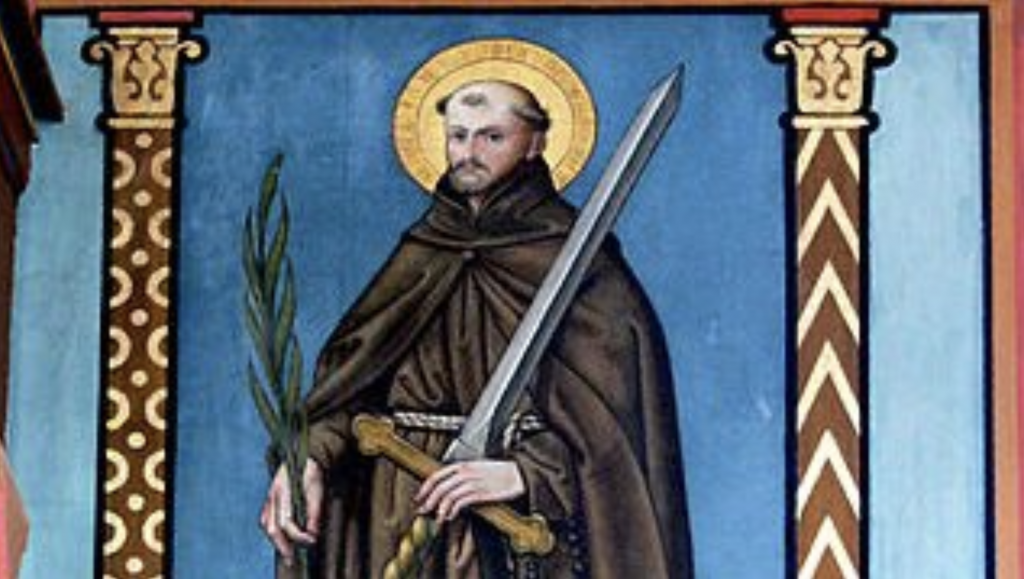St. Fidelis lived between the 16th and 17th centuries in Western Europe, which was a time of great conflict for the Church. Born Mark Rey in 1577 in what is now Germany, Fidelis studied at the University of Freiburg, and earned his law degree in 1611.
Although he had studied canon and civil law, Mark opted to become a secular attorney, focusing on the poor and needy. After he became disgusted with the corrupt ways of the law, he left his legal practice and was ordained a priest. Mark then joined the Capuchin Franciscans in Freiburg, taking the name “Fidelis,” meaning “faithful.”
Fidelis embraced radical poverty and simplicity, and left his inheritance and his books to a scholarship fund for poor seminarians. He spent much of his time preaching, writing, and celebrating the sacraments, caring for the poor and sick, and soldiers suffering from the plague.
In 1614, a Swiss bishop sought help from the Capuchins to restore the faith and halt the spread of Calvinist Protestantism. Fidelis was sent, bringing with him only four items: a Bible, prayer book, crucifix, and copy of the Capuchin rule.
He spent many months preaching from the pulpit and in public places, bringing many Swiss Protestants back to the Church. But tensions between the Protestants and Catholics continued to rise, eventually boiling over on April 24, 1622. Fidelis’ preaching provoked a riot at a church in Seewis. Several Austrian soldiers were killed in the chaos, and a would-be assassin tried to shoot Fidelis. He declined a Protestant’s offer of help, but was confronted outside of the church by a mob. They told him to choose between his life or his faith. Fidelis defied, saying, “The Catholic religion is the faith of all ages. I fear not death.”
The mob beat and stabbed St. Fidelis to death, but the sight of his martyrdom is said to have converted one of the Protestant preachers who had led the mob.

